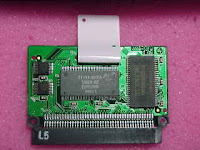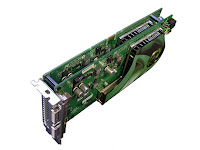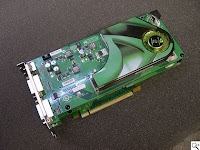Intel DX58SO MotherboardBottle necks slow down performance. This happens when the processor, or one of its core, is unable to fetch data or instructions fast enough. The memory of the computer system is particularly important because of the amount of data that is passed through it as the system receives instructions from the applications. Theoretically speaking, this means that the faster a processor receives data from memory, the better the performance.
Traditionally, processors have been connected to the memory of a computer via an external bi-directional front-side bus (FSB). This bus served as the central connection point between the processors, the chipset that contains the memory controller hub, and all the other buses such as PCI, AGP, etc.
Intel engineers know that having more powerful processors means that the architecture must also be upgraded to ensure that data flows more quickly between all the different components, and thus the Quickpath Interconnect was created.
The most notable element of the Quickpath architecture is that the memory controller is now integrated into each microprocessor. Each processor has a dedicated memory controller. In the event that a processor needs to access data from the dedicated memory of another core, it can do so through a high speed connection. This allows the cores to get data from memory controllers directly, and connection with other components of the system is also greatly enhanced. The technology is named Quickpath Interconnect because that is precisely what it offers: high speed connection between all the components.
For this reason, the Core i7 processors can only be used on motherboards that support Quickpath Interconnect. The Intel DX58SO is one such example.
The Intel DX58SO motherboard (codename “Smackover”) consists of the Intel X58 Express chipset with ICH10R south bridge chip. The ICH offers support for all the other devices such as video and audio. All buses and components operate on a 133.33 MHz base clock. In other words, a multiplier is applied to the base clock to acquire a speed value. There are four multipliers on the motherboard that affects the overall system speed. They are the CPU speed, the memory speed, the Quickpath Interconnect (QPI) speed, and the uncore speed. The first three are dedicated to overclocking. Uncore speed is the multiplier that is applied to devices that do not draw power from the processor. Together, these four multipliers manage the overall system performance.
Besides support for the Core i7 processors (it supports all three editions), the DX58SO also offers other features, including integrated Intel audio, improved graphics performance, and the PCI Express 2.0 interface that delivers up to 16GB/s bandwidth per port.
As all data and applications are stored on a systems hard drive, it is of utmost importance that the system is able to draw data from the drives very quickly. This is achieved through six SATA ports with transfer speeds of up to 3GB/s. For external storage devices, eSATA is available to help achieve the same performance.
With the DX58SO motherboard, Intel actually emphasizes system stability significantly. For example, the motherboard features an exclusive fault tolerant BIOS that virtually eliminates downtime due to a corrupted BIOS.
The new features certainly promise highly enhanced performance. However, how does the Core i7 perform under stringent hardware tests?
Test ResultsTesting has been performed on four separate systems. The first three systems are the three editions of Core i7 processors. They are mounted on the DX58SO motherboard. The last system is the Intel X3350 processor (overclocked to 3.2 GHz), mounted on an ASUS P5E3 motherboard.
All 4 systems were put through a series of benchmarking tests using leading diagnostic/testing applications such as 3DMark system test, SANDRA 2009 system test, Everest Ultimate system test, POV Ray, SuperPi, WinRAR, Crysis, and World in Conflict tests. The results from so many tests reveal almost everything that enthusiasts would want to know about how the Core processors fare when compared to the X3350 overclocked processor. Performance values are obtained for CPU, memory, and storage system tests, single and quad-core rendering tests, and graphics performance tests (DirectX).
The CPU system tests reveal that the Core i7 processors outperform the X3350 processor by as much as 40%. The difference is even more dramatic for the memory tests. Memory bandwidth was shown to be over 100% higher (more than double) for all three editions of the Core i7 processor. Compared to the X3350 system, which uses external memory controllers, the direct memory controllers on the Core i7-based systems certainly works much better.
The 3DMark scores are usually used by gamers to gauge how efficient a system performs when running a 3D game. There are two scores – one for the GPU (Graphics Processing Unit) and one for the CPU. The GPU scores showed very little differences, as the graphics card used on all systems is the same. As the graphics processing was offloaded to the GPU while the tests were ran, the results are rather predictable. However, the CPU reflects slight differences that fall between the range of 5% to 10%, with the highest end Core i7 processor having the highest score.
The SuperPi scores are used by overclockers and enthusiasts all over the world to benchmark and test the stability of an overclocked system. The assumption is that if a system can successfully compute PI values for up to the 32 millionth decimal place without error, it is moderately stable in terms of RAM and CPU. Tests done on 1M, 2M, and 4M calculations all show that the highest end Core i7 processor produces the best performance. The X3350 processor loses out to the Core i7 920 by a small margin










